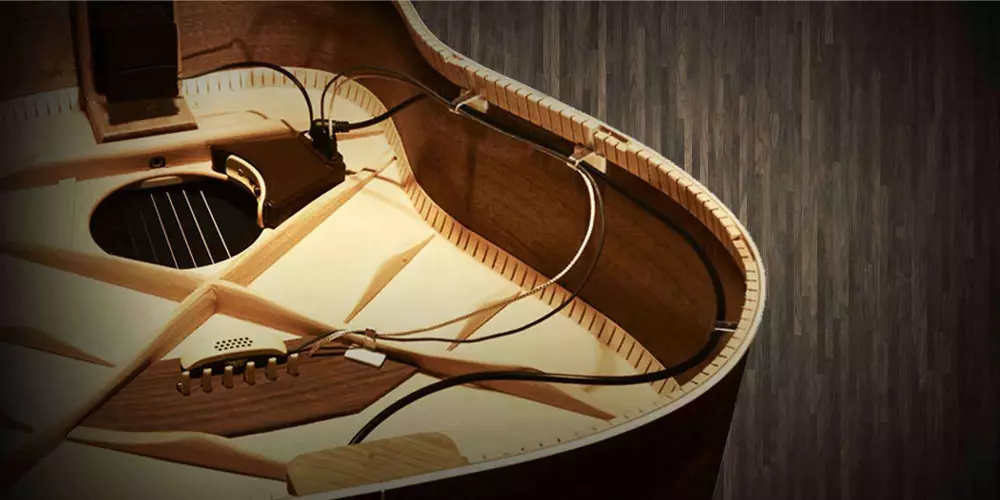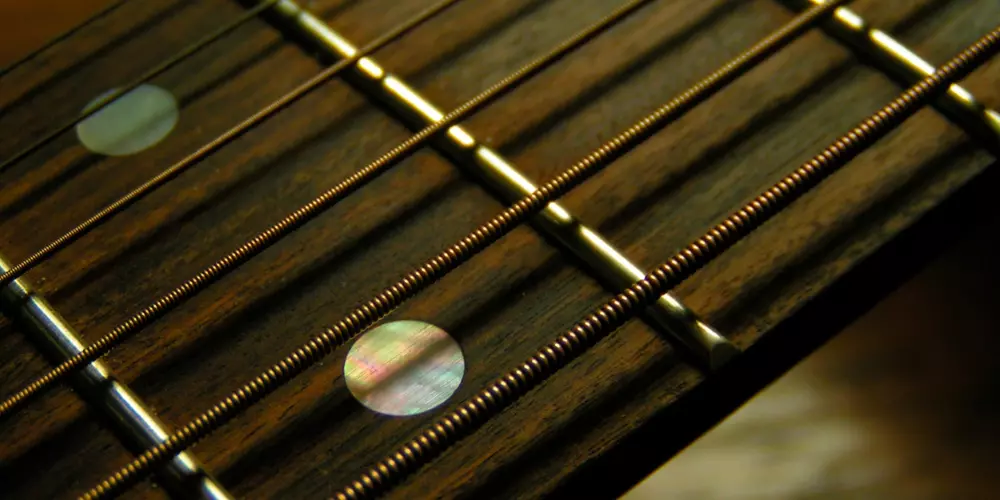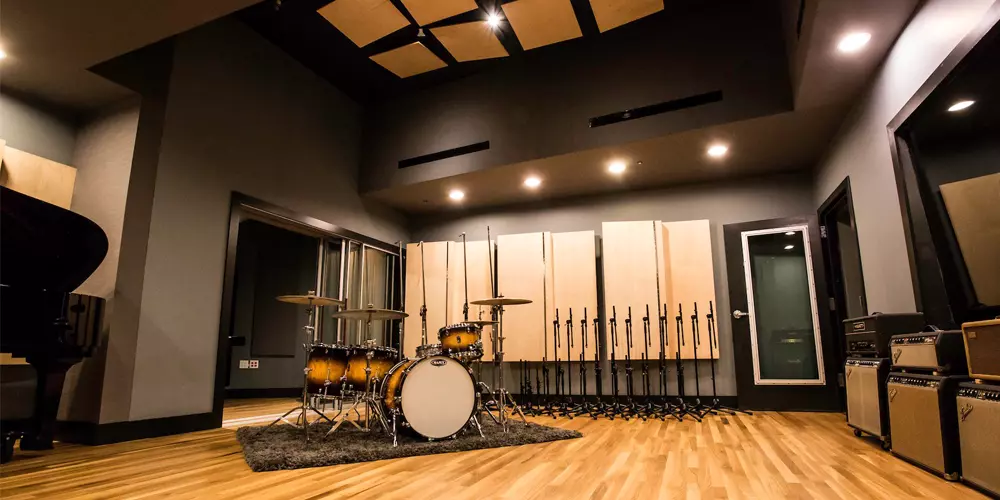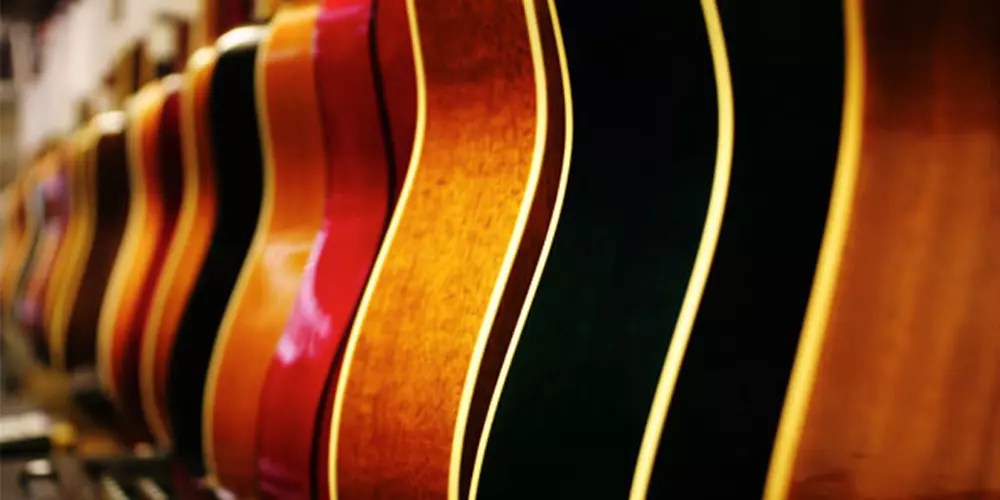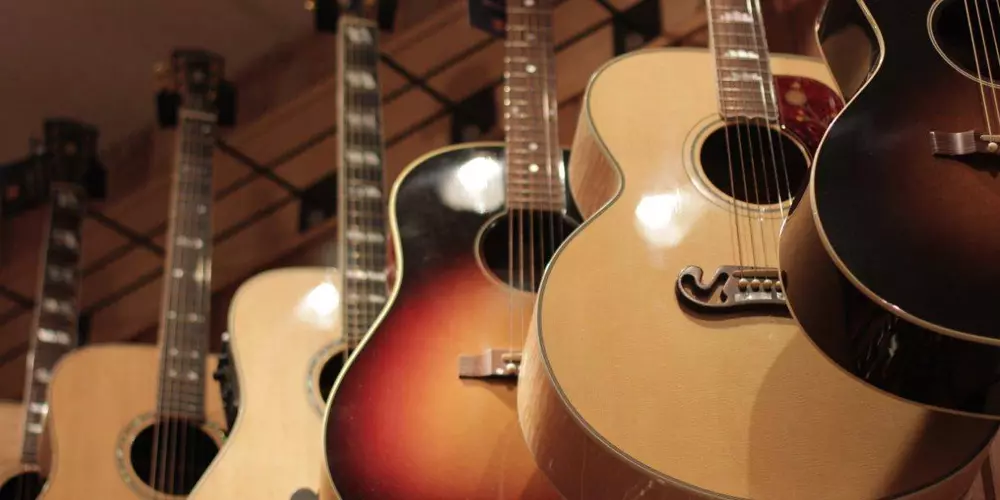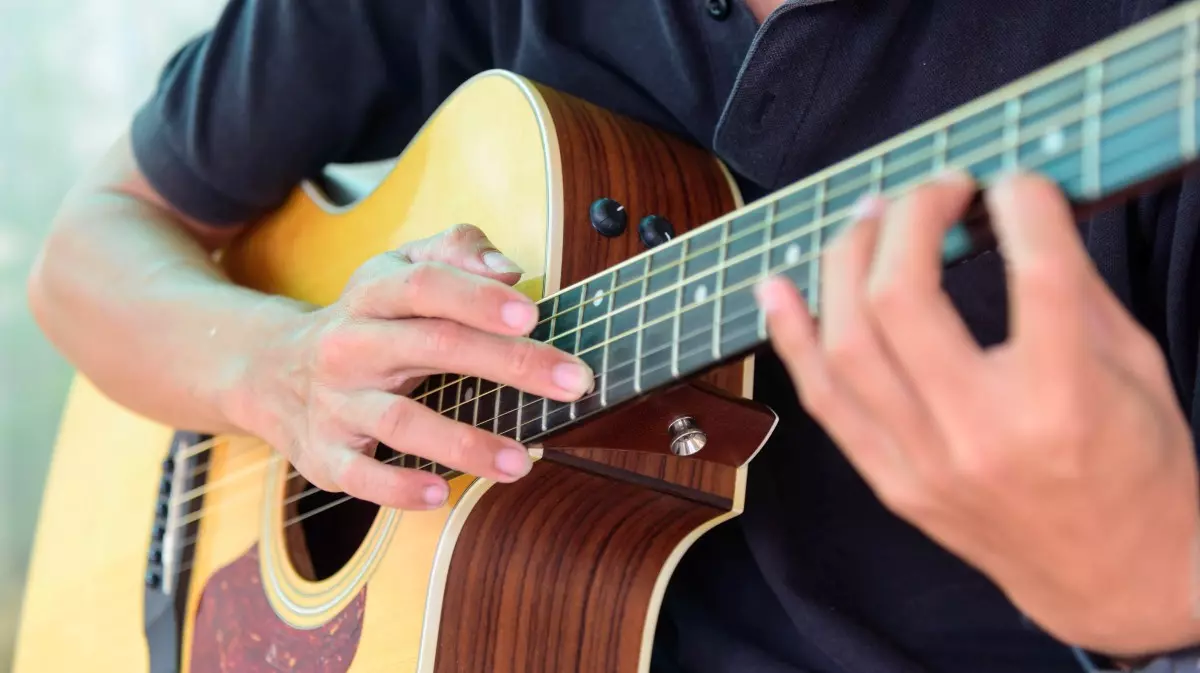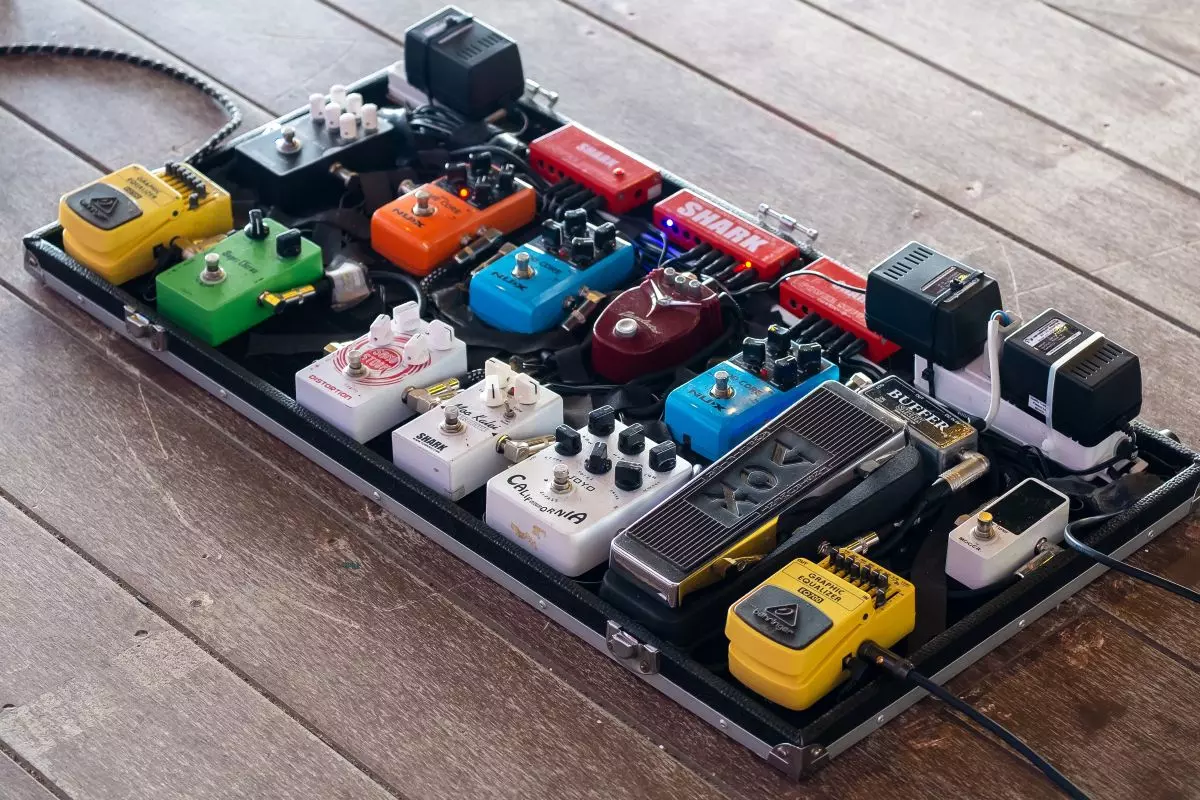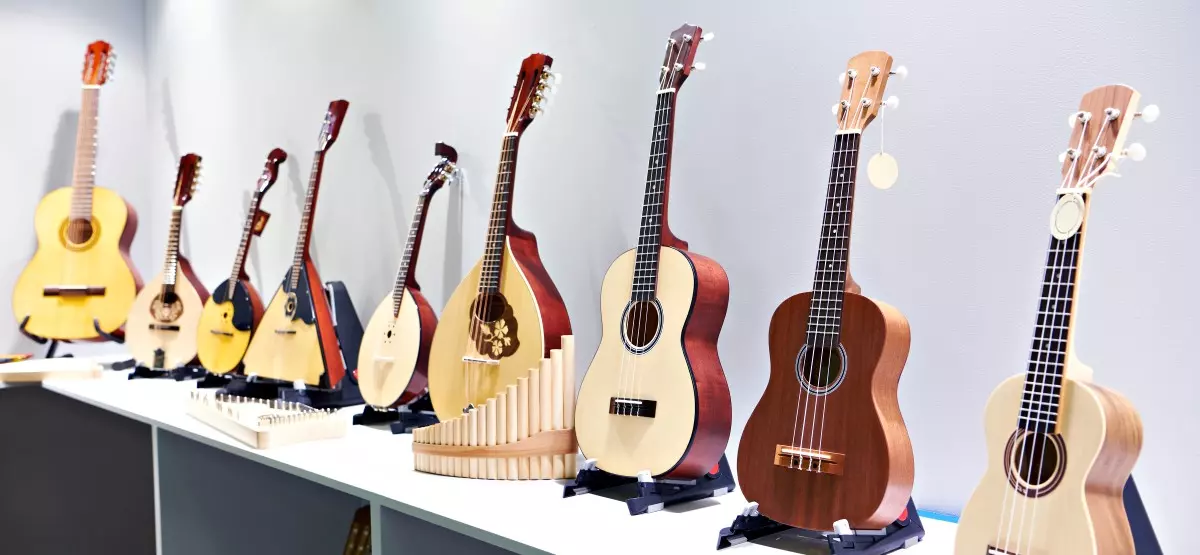7 Ways to Improve Your Acoustic Guitar Sound
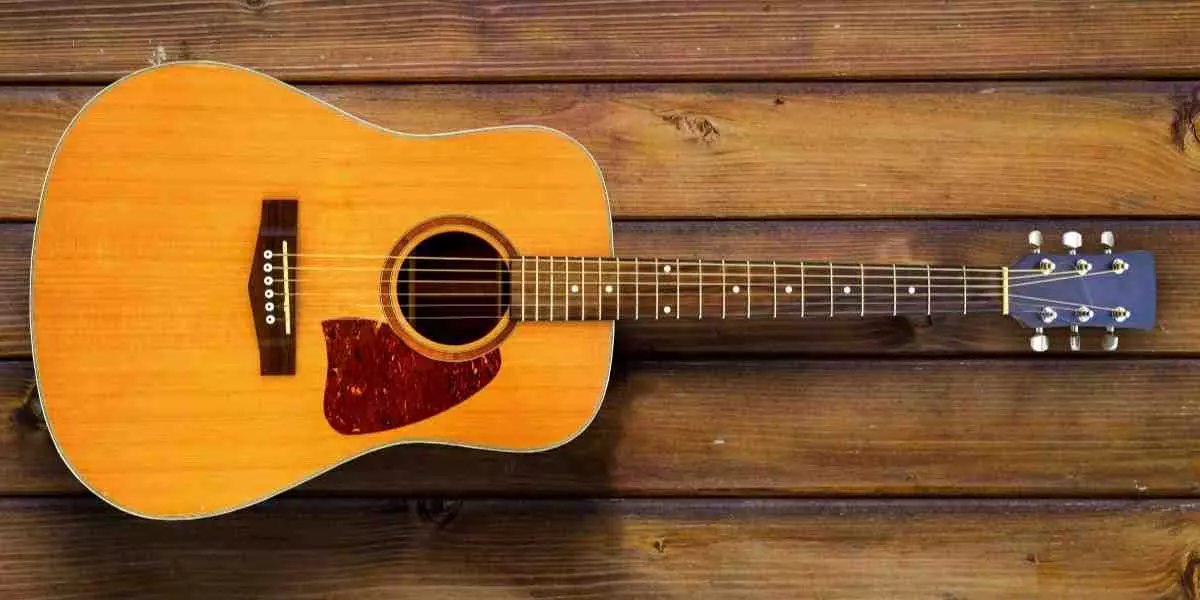
Playing the acoustic guitar is a joyous and fulfilling experience. But have you ever wanted to make your guitar sound like a full band? With the proper techniques and some practice, it’s possible.
With some innovative techniques and some practice, you can transform your acoustic guitar into a versatile instrument that emulates the sound of an entire band.
This article will explore 7 ways to improve your acoustic guitar's tone and achieve a rich, full-bodied sound. You’ll learn to add rhythm, percussion, melody, and bass. By the end, you’ll be able to play like a one-person band with just your acoustic guitar.
1. Utilising Percussive Techniques
One way to create a fuller sound on the acoustic guitar is to use percussive techniques. Tapping, slapping, and using your guitar as a drum can add rhythm and depth to your playing.
Try techniques like palm muting, body percussion, or using the guitar as a hand drum. You can also add some rhythm by playing harmonics, slides, or percussive hits on the strings. For extra tempo, use a kick stomp box with your foot. Don’t overuse this in every song—sometimes, leaving it out creates a nice dynamic shift.
2. Mastering Fingerstyle and Strumming Patterns
Fingerstyle and strumming patterns are essential skills for improving acoustic guitar playing. The fingerstyle technique involves using individual fingers to pluck the guitar strings, while strumming involves sweeping your fingers or a pick across the strings.
By combining the two techniques, you can mimic the sounds of multiple instruments. Try different fingerpicking patterns to create melodies and harmonies. Add bass lines to your fingerstyle to simulate a bass guitar, adding depth to your sound.
For strumming, practice various patterns, including upstrokes, downstrokes, and syncopated rhythms. These techniques can emulate the sound of a strummed guitar or even an entire rhythm section. Songs like “Tears in Heaven” by Eric Clapton and “Sledgehammer” by Peter Gabriel are great examples of fingerstyle guitar picking.
3. Expanding Your Guitar's Range with Alternate Tunings
Alternate tunings can greatly expand your acoustic guitar's range and tonal possibilities. By tuning the strings to different pitches, you can create unique voicings and emulate the sound of other instruments.
For example, an open G tuning (D-G-D-G-B-D) can sound like a slide guitar. A dropped D tuning (D-A-D-G-B-E) can create a deeper, heavier sound like a baritone or bass guitar. The type of strings you use can also affect your sound, depending on whether you choose nylon strings or steel-string acoustic.
Experiment with different tunings and take the time to learn new chord shapes and progressions that work well with each tuning. This will allow you to achieve an overall tone and create the illusion of multiple instruments playing at once. John Mayer’s “In Your Atmosphere” is a good example of using alternate tunings.
4. Using Effect Pedals
Today's technology offers many ways to improve your acoustic guitar sound. Utilizing effects pedals and loop stations can transform your instrument into a versatile instrument.
Effects pedals such as reverb, delay, chorus, and distortion can add depth and ambiance to your playing. Loop stations allow you to record and layer guitar parts, making it easy to create complex arrangements on the fly. Amp simulators also help you achieve different guitar tones.
Effect pedals such as Strymon Cloudburst, Gamechanger Audio Plus, and Strymon Brigadier can improve the overall sound. You can also use these effects instead of a loop so that the whole sound will be authentic to a single person playing.
Experiment with different effects, but remember not to overdo it. The goal is to enhance your sound, not overwhelm it. A good balance will help you mimic an entire band’s sound while keeping the acoustic guitar’s unique qualities.
5. Vocal Effects and Use of Technology
Usually, when a band plays, someone such as your guitarist or a backup singer sings the harmonies. To play as if you are a one-person band, you must incorporate specific effects to accomplish the task of your missing band members.
Devices like the Eventide H9 with an expression pedal can help build those harmonies and create moments within the same setlist. Also, backing those up with separate reverb pedals, like the UAFX Golden Reverberator, can add extra depth to your vocals.
It’s also essential to use the right microphone for your voice. Popular microphones such as the Shure SM58, SE V7, and Telefunken M81 are excellent choices for a wide range of dynamic microphones.
6. Use of different guitars
The beauty of an acoustic guitar is that every guitar is subjective to the musician. All guitar players worldwide would agree that every guitar on this planet is based on personal preference. Different sizes will produce different sounds and feel different in your hands.
Having two or three guitars throughout the set will make every song sound different, and all those effects will react differently to a different guitar.
Looping an acoustic guitar and soloing on an acoustic will sound similar. Anytime you loop, try to change the guitar type. For example, if you have a loop of an acoustic guitar, try playing an electric guitar solo over it. This tip will help you find a different side of the song, and it looks cool.
7. MIDI Controller and MIDI Bass Pedal
Incorporating a MIDI controller into your setup is a great way to expand the capability of your acoustic guitar. A MIDI controller allows you to make additional sounds and effects without needing extra musicians or instruments. With just your guitar and a foot controller, you can activate loops, keyboard sounds, drum machines, and more, allowing you to simulate a full band.
A MIDI foot bass pedal is another tool for creating a fuller sound. This device lets you play bass lines with your feet, giving you the illusion of having a bass player with you. You can trigger bass sounds that complement your guitar melodies, adding depth to your music.
Together, the MIDI controller and MIDI foot bass pedal can fill the spot of a bass player.
Becoming a One-Person Band
With creativity, practice, and the proper techniques, you can turn your acoustic guitar into a full band. By incorporating percussive techniques, mastering fingerstyle and strumming patterns, exploring alternate tunings, and utilizing effects and technology, you can create a vast array of sounds that mimic the presence of multiple instruments.
Embrace the versatility of your acoustic guitar, and let your creativity soar as you feel like a one-person band. Long & McQuade carries all the guitar accessories you need for your individual or band needs. Visit one of your local retail stores to try a specific pedal and microphone, or order online today.

